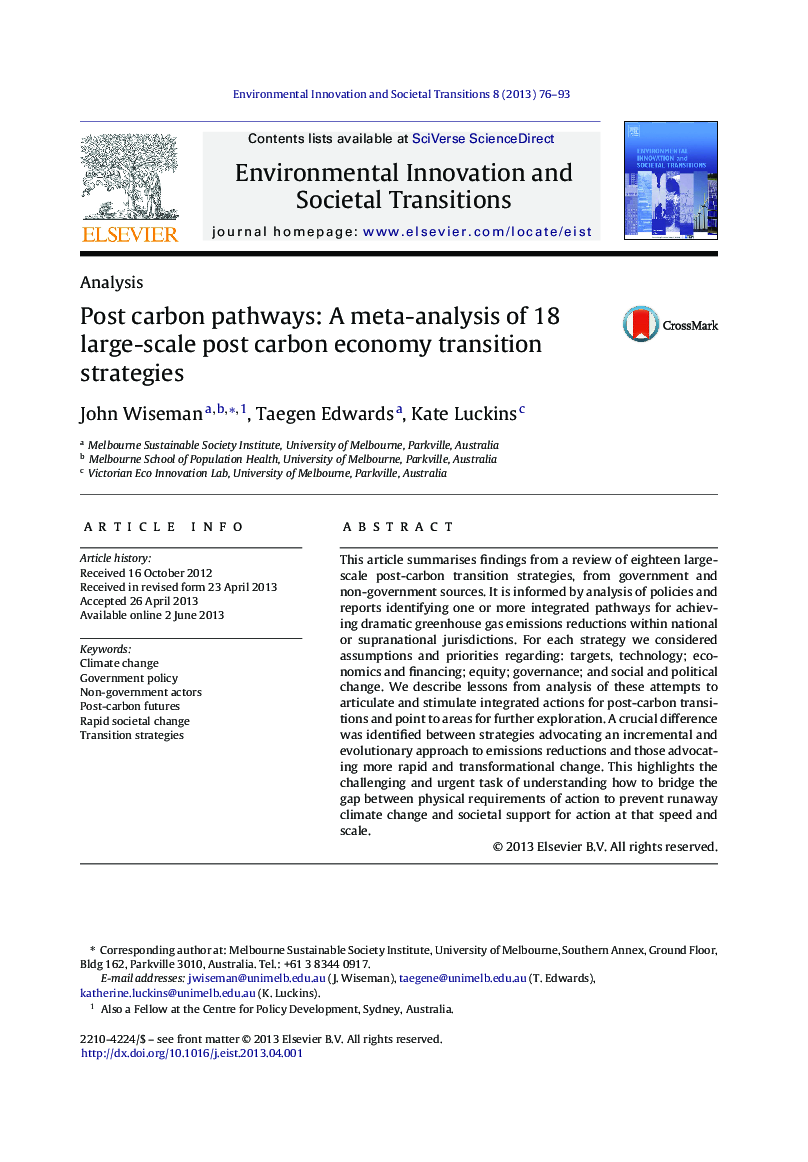| Article ID | Journal | Published Year | Pages | File Type |
|---|---|---|---|---|
| 108236 | Environmental Innovation and Societal Transitions | 2013 | 18 Pages |
•We compare eighteen post carbon transition strategies from government and non-government sources.•We analyse targets, technology, costs, equity, governance and social change aspects.•Strategies confirm technology and costs are not key transition barriers.•Strategies do not adequately explain pathways for rapid societal change.
This article summarises findings from a review of eighteen large-scale post-carbon transition strategies, from government and non-government sources. It is informed by analysis of policies and reports identifying one or more integrated pathways for achieving dramatic greenhouse gas emissions reductions within national or supranational jurisdictions. For each strategy we considered assumptions and priorities regarding: targets, technology; economics and financing; equity; governance; and social and political change. We describe lessons from analysis of these attempts to articulate and stimulate integrated actions for post-carbon transitions and point to areas for further exploration. A crucial difference was identified between strategies advocating an incremental and evolutionary approach to emissions reductions and those advocating more rapid and transformational change. This highlights the challenging and urgent task of understanding how to bridge the gap between physical requirements of action to prevent runaway climate change and societal support for action at that speed and scale.
